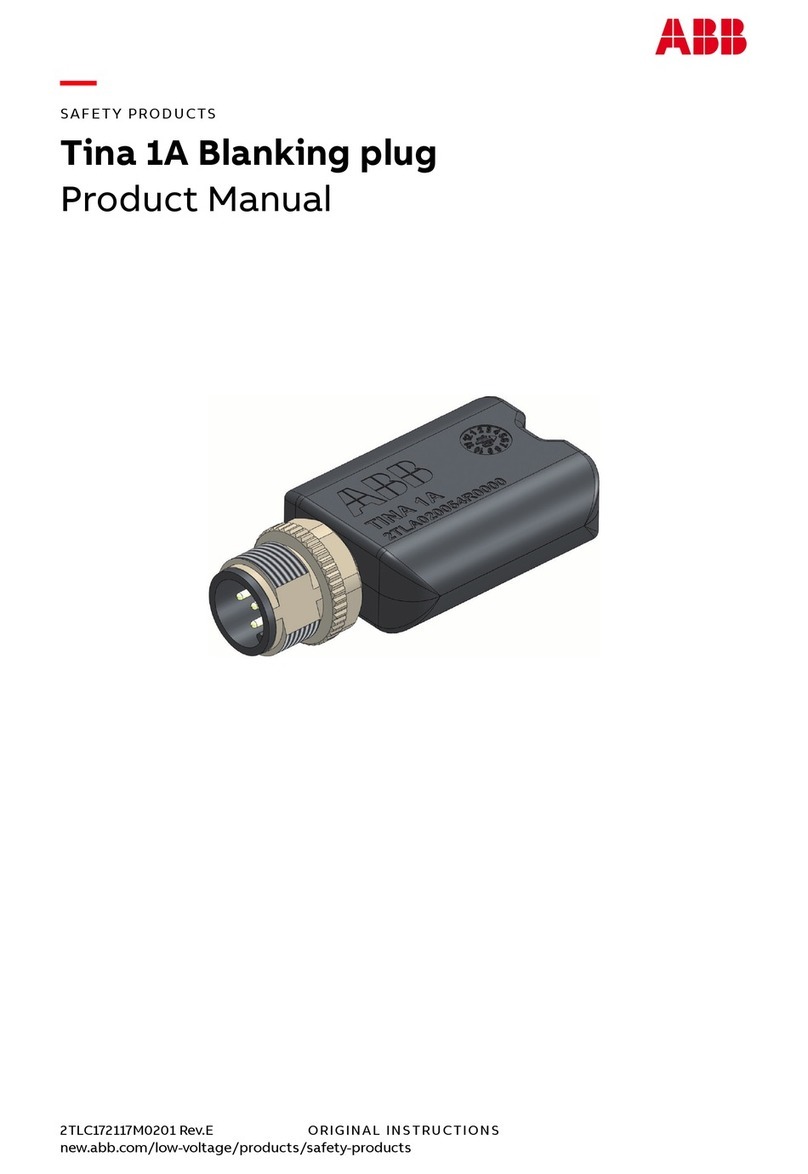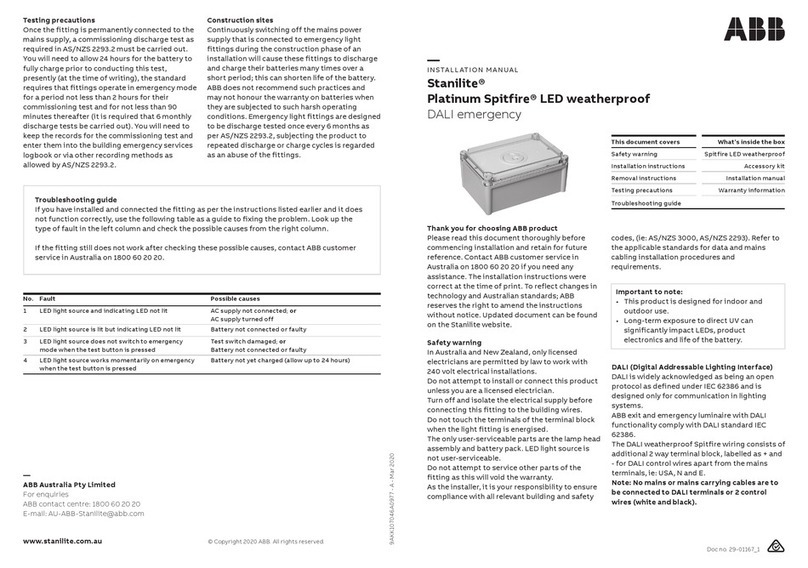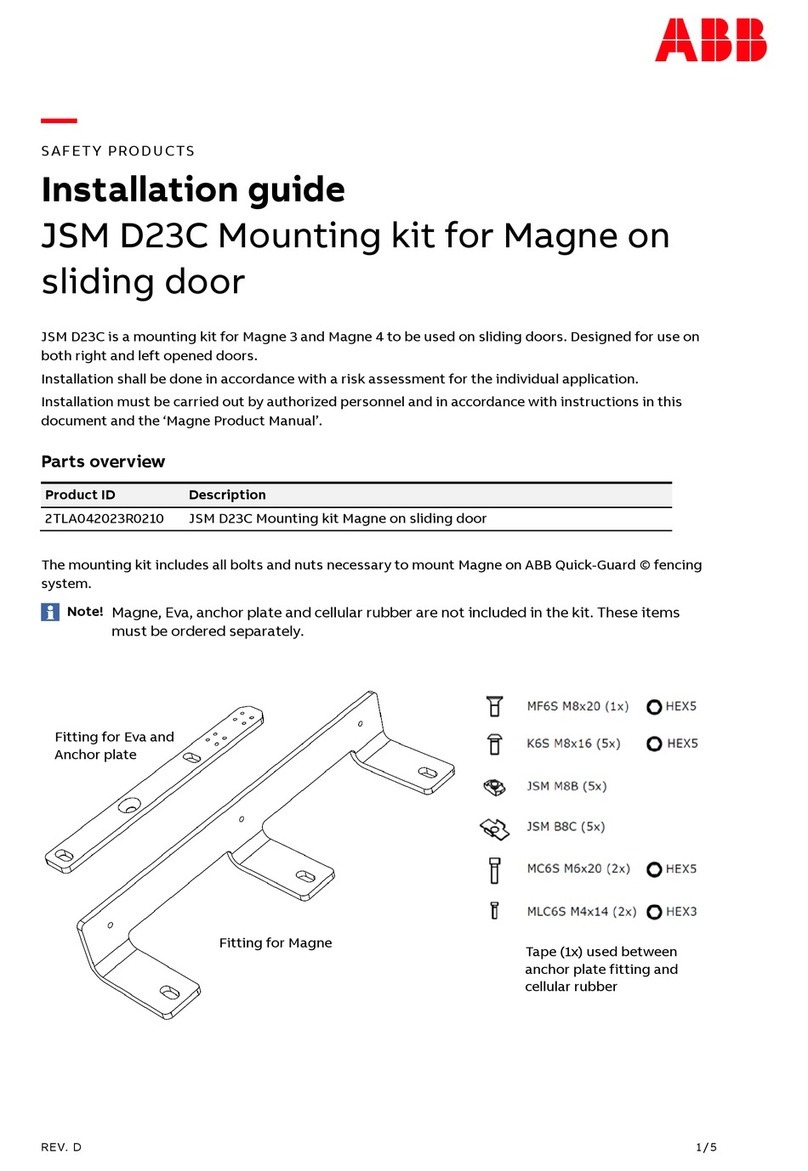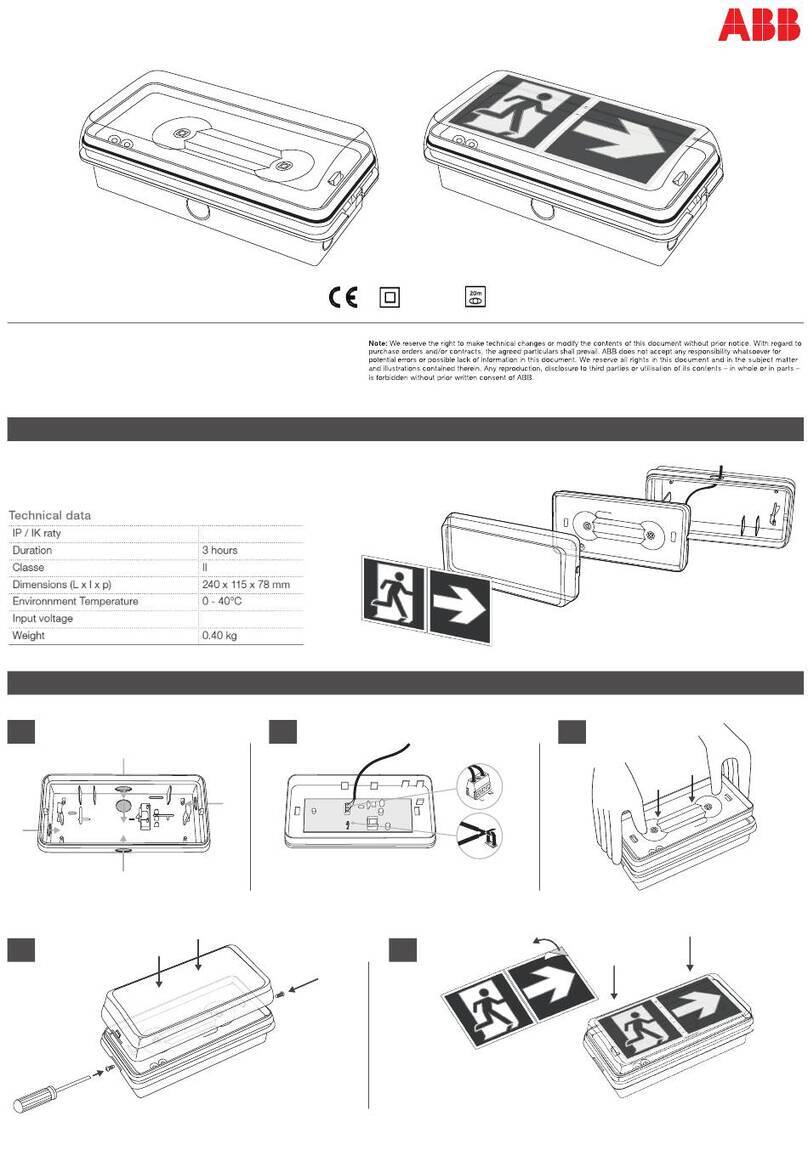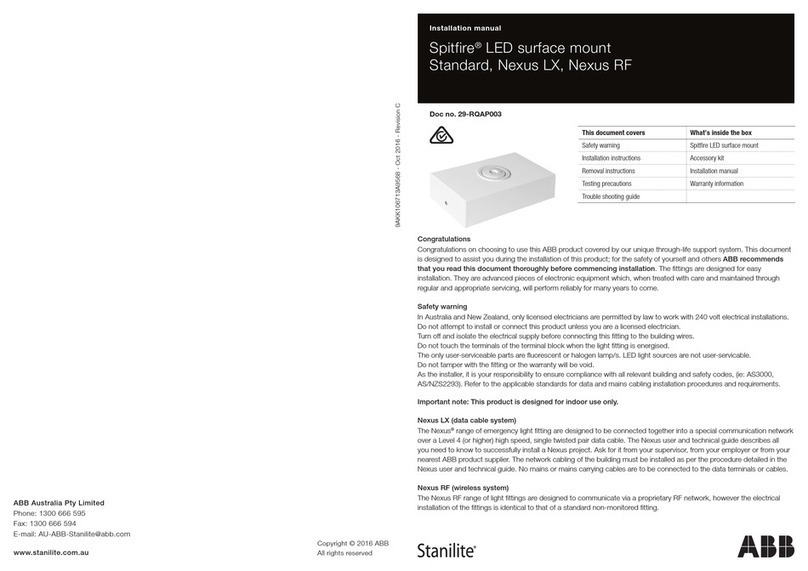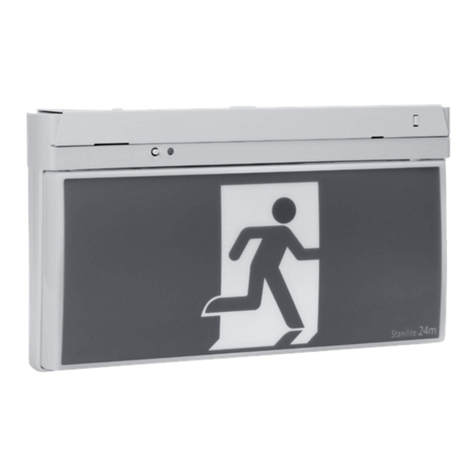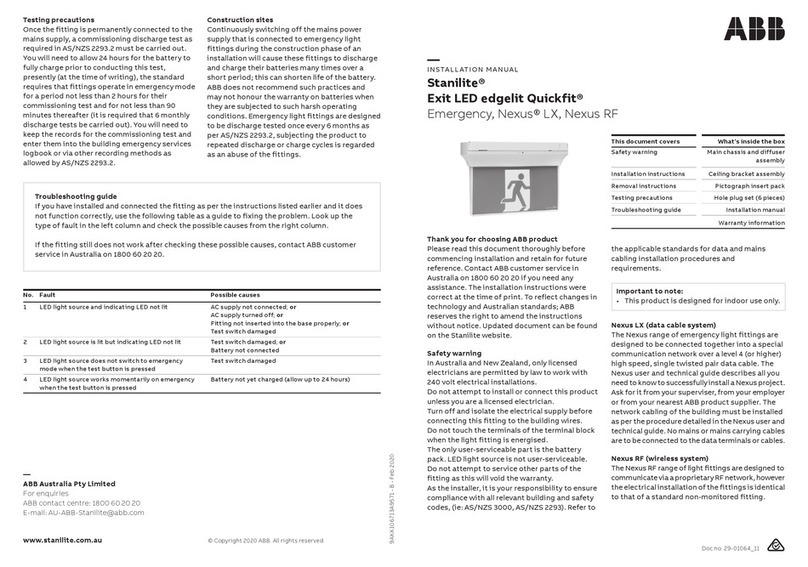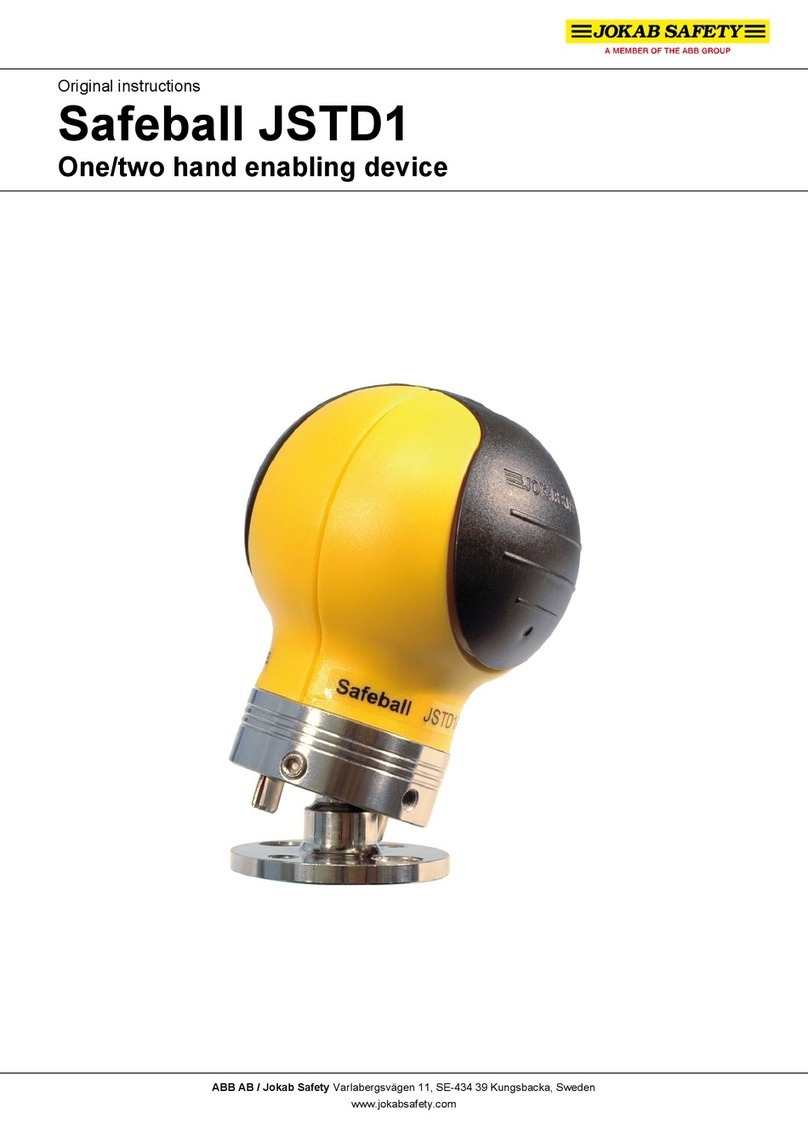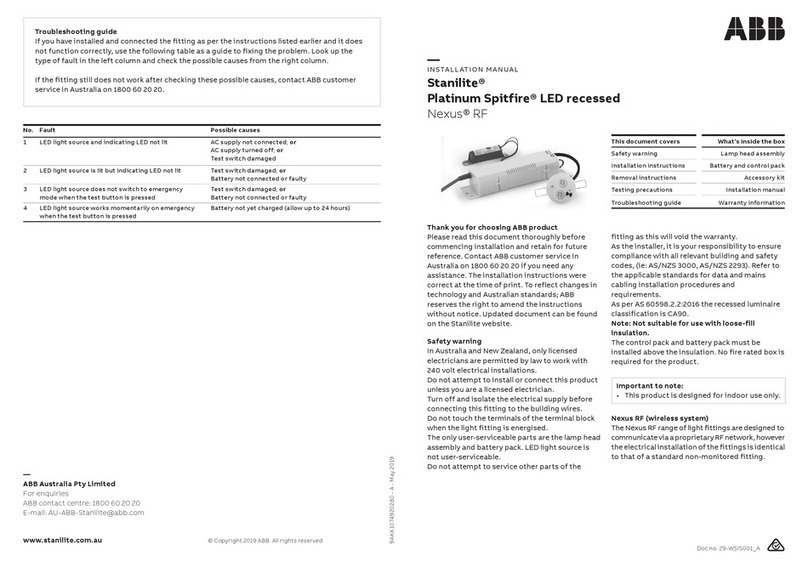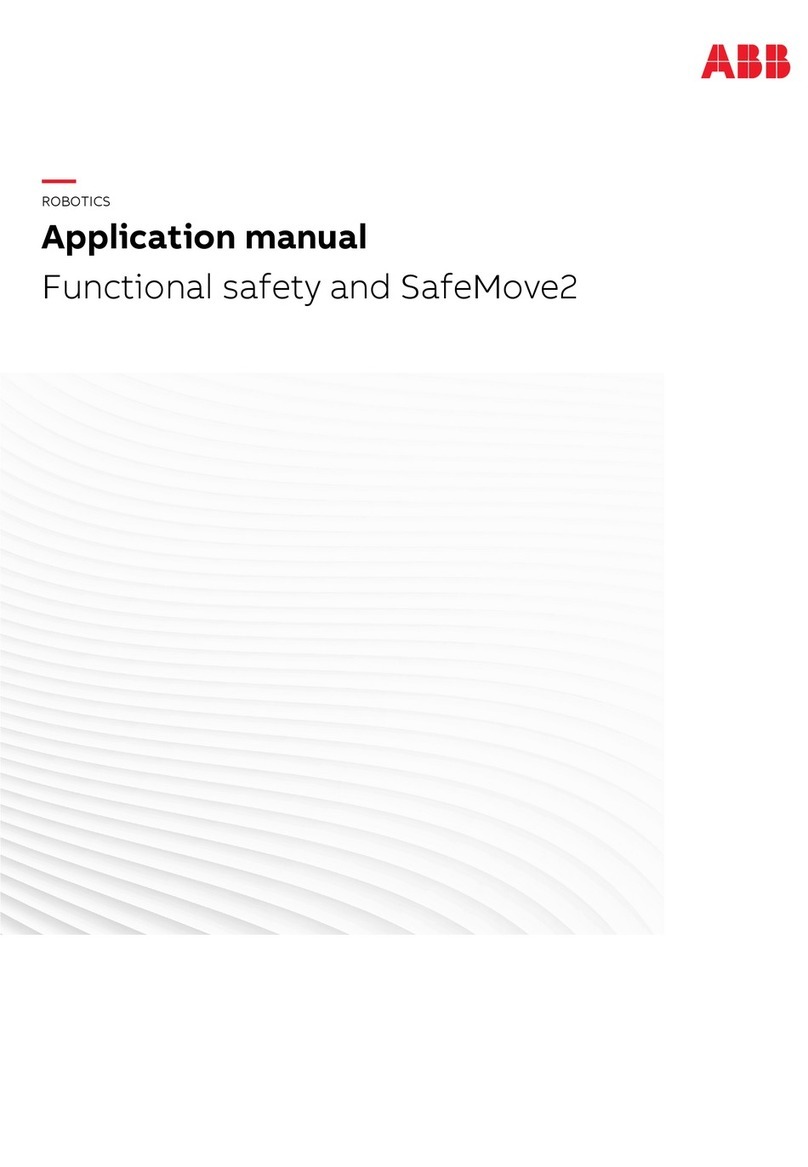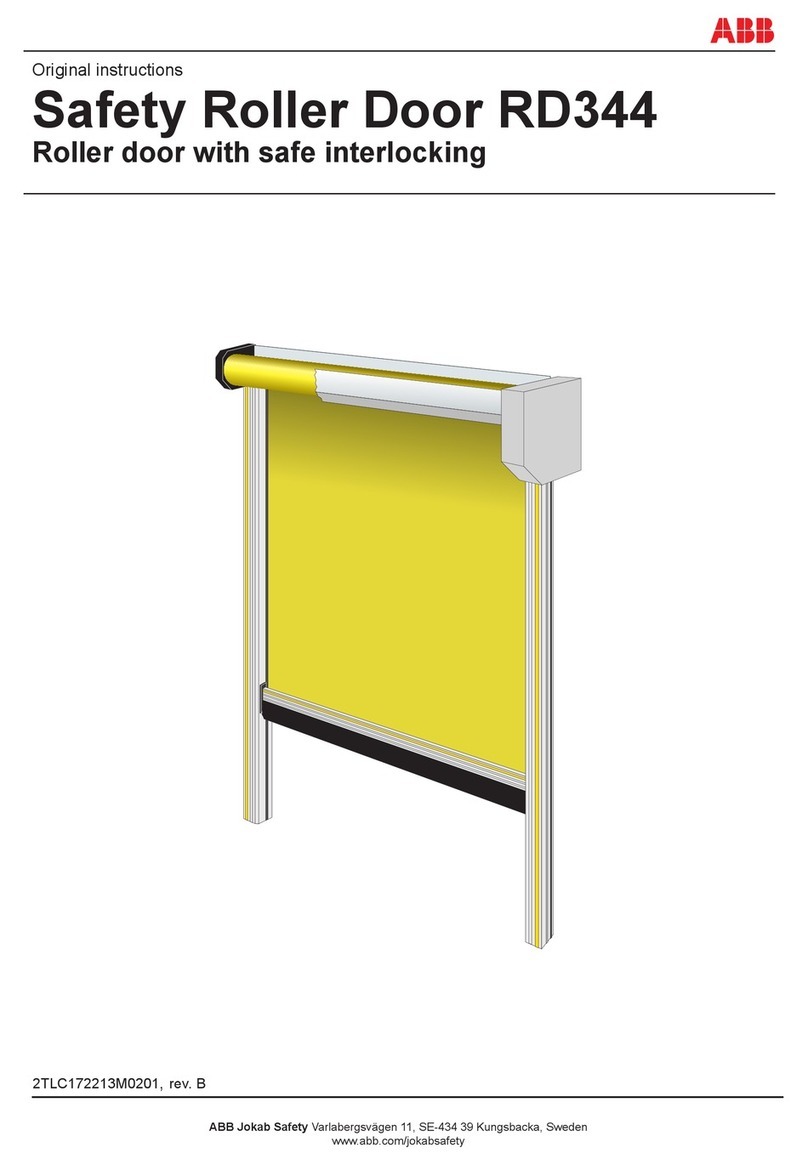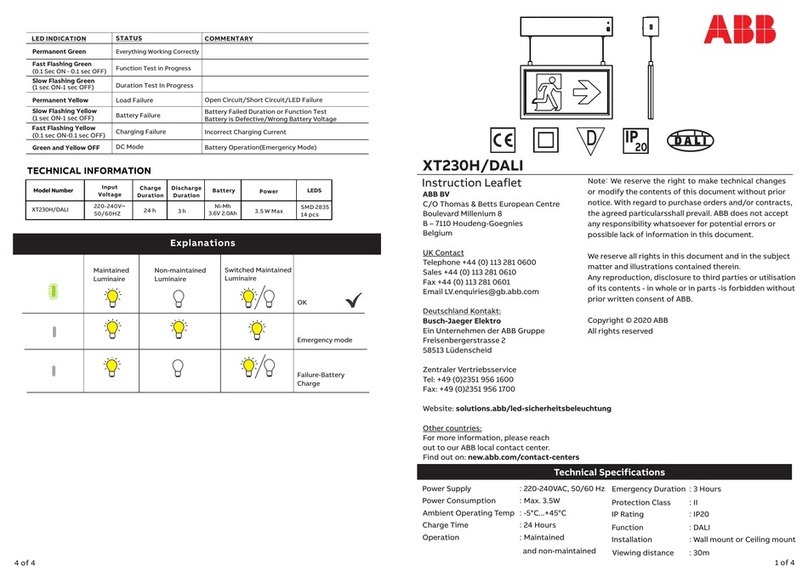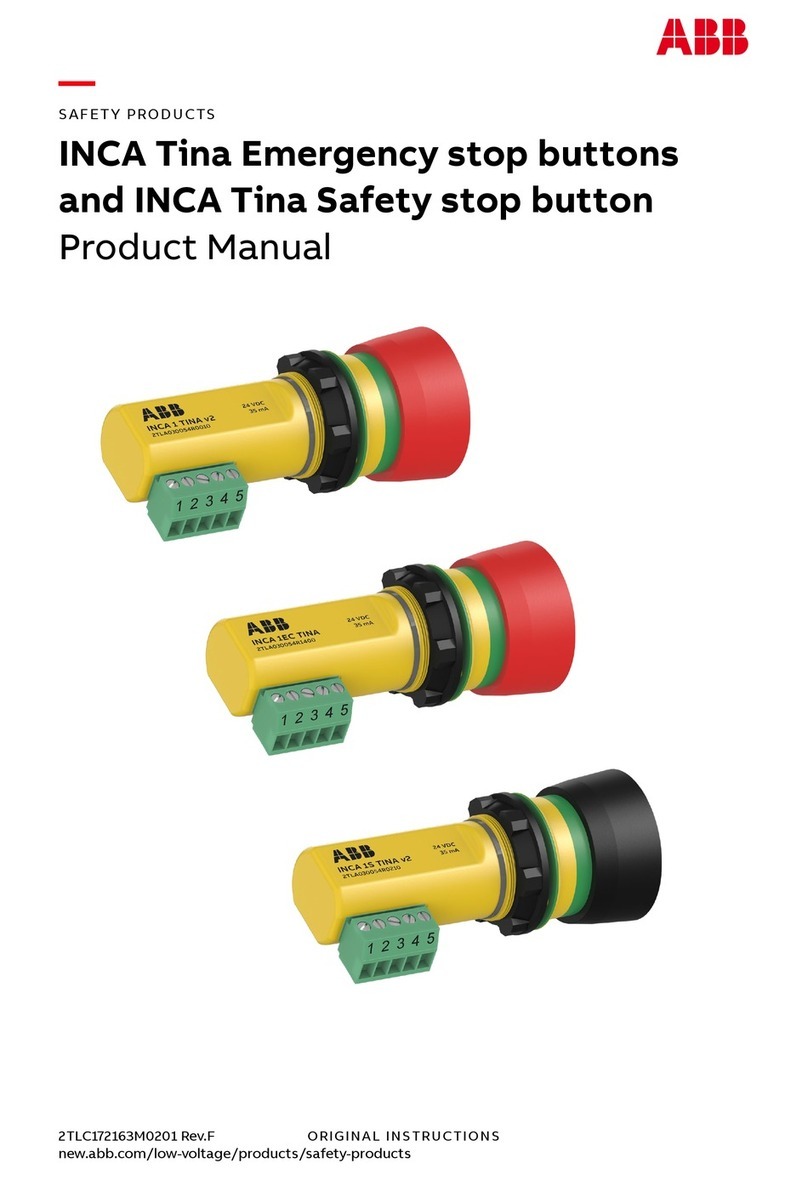
Tel: (888) 552-6467 Fax: (800) 316-4515 www.tnb.com
Pictogram Sign for Hazardous Locations
2/4
02/15 750.1593 Rev. B
Ceiling Mount (Figure 1)
a. Remove junction box assembly from carton. Remove junction
box cover from junction box assembly and retain securement
screw.
b. Install junction box and route ACcircuit wires into the junctionbox
and leave 6” of wire length.
c. Remove lens, two pictogram panels and the opal diffuser on the
front of the unit (use the supplied bit to remove the tamper-proof
screws).
d. In order to access the knockouts of the frame, remove the 4
screw(s) holding the frame insert to the frame and separate them
(see Figure 2).
e. Ensure that the retaining screw is accessible (see Figure 1, Part
No. 13). Usethe screws fromthe junction boxto secure thecover
to the junction box.
f. Remove the left knockout on top of the frame. Determine which
holes in the frame will be used for mounting (see Figure 1).
Support frame with two blocks of wood, maximum one inch apart.
Strike knockouts with a hammer and screwdriver. Clear holes of
burrs to allow proper assembly of nipple/wire assembly.
g. Thread nipple/wire assembly into the frame.
h. Secure junction box cover to the frame using the provided nut.
i. Reassemble the frame insert inside the frame.
Wall Mount (Single Face Model Only)
a. Remove junction box assembly from carton. Remove junction
box cover from junction box assembly, install hub on junction box
and retain securement screw.
b. Remove the backplate (9) from the packaging. Determine the
proper knockouts to remove for mounting to the junction box (see
Figure 3).
c. Support area around knockouts with two blocks of wood. Strike
knockouts from the inside with a hammer and a screwdriver.
d. Reinstall the backplate to the frame using the 6 tamper-proof
screws (use the supplied bit).
2. Electrical connections: Connect one end to the leads inside the
enclosure and the other end to AC line voltage inside the junction
box. Connect the white lead to neutral and the purple lead to AC line
voltage (the input is universal ). (See Figure 4). Connect the
ground(green wire) to the junction box.
Optional: For AC models with DC remote power, one end connects
to the LED-STRIP leads inside theenclosure and the other endto the
DC input inside the junction box. Connect the redlead to the positive
and the blue lead to the negative of the remote DC input
(see Figure 4).
For ceiling mount: Mount the frame and junction box cover
assembly to junction box by using the provided securement screw.
For wall mount: Attach the frame (6) to the junction box, using the
junction box supplied screws. Install 2 stem washers to ensure
bonding.
3. Select the desired pictogram panel and install it with the opal diffuser
behind. The pictogram panel without arrow shall be installed facing
right (see Figure 5).
4. Install the lens by using the 6 tamper-proof screws.The o-ring has to
be installed on the center screws between the lens and the frame as
shown in figure 1.
The tamper-proof screws should be equally torqued to
approximately 10 - 15 in-lbs (1.1 - 1.7 N-m).
5. Energize AC. Sign will illuminate.
Figure 3
Figure 4
Purple- AC
White - Neutral Red + DC
Blue - DC
Battery
(Self-Powered
Transformer
DC supply
only)
Primary wire connections must be isolated from charger.
Figure 5
pictogram panel with arrow
pictogram panel
Install the panel with Flip the panel
the person going to the right for arrow left (below)
